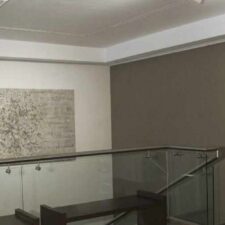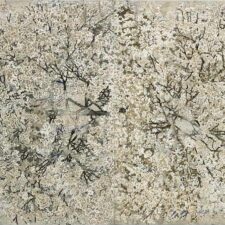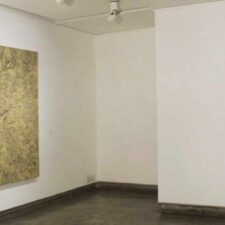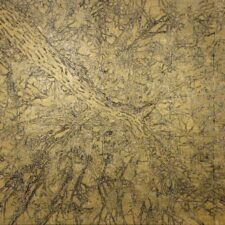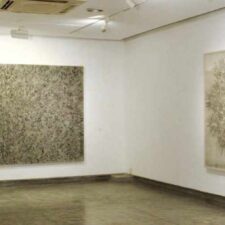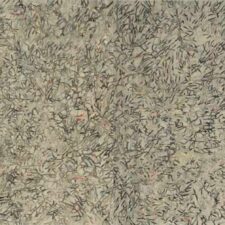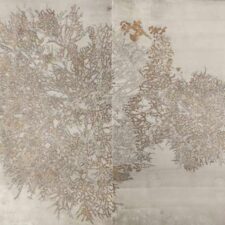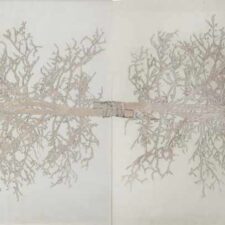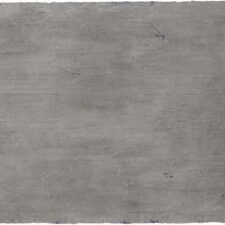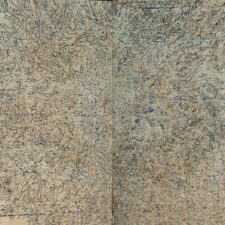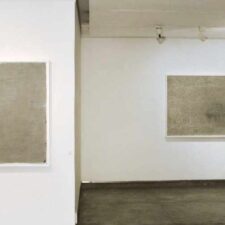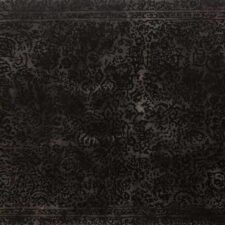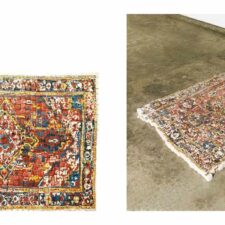
Ether is all that is
To G R Iranna, Ash, in substance, presence or essence implies both an artistic as well as a conceptual engagement. This is not just a sudden addition into his oeuvre, but an organic extension of his predilection towards tactility of his mediums on a scale that is larger than life. Here Iranna is drawn to using ash along with charcoal powder and powdered pigment, as he tenderly overlays the harsh surface of tarpaulin, while merging its presence into his muted colour palette. Some years ago, he began to indulge the blackness of coal powder along with the raw, grainy touch of charcoal, exploring its affinity for impermanence, suitably evoking human vulnerability and fragility of life. The dispersed nature of ash, its colourless, odourless and formless presence is at the core of this serene exhibition that is summed up in a beautiful Upanishadic thought- ‘all that now is and all that is not.
Iranna picked up his early values from his childhood schooling in an ashram and a humble upbringing at home, where the spiritual aspects of the journey of life were emphasised. As Shaivites, the everyday ritual of applying ash on the forehead was not just about wearing one’s identity, but had deeper significance of being connected with faith and coming to embrace a comfortable acceptance of the final truth. At the point of having entered the world, ash (vibhuti) is applied on the skin of the child. In a sense, the inseparability of birth and death are simultaneously invoked, for vibhuti is also a reminder of one’s final departure. Iranna recalls how deeply the idea of mortality remains embedded into his subconscious. Returning to his earliest memories, his fascination with this material has been growing, and its potential as a reminder of the futility of power, control, rage and violence, and the deception of permanence even more so in the uncertain times we live in. A return to nothingness is a silent seeking for a healing within.
While one is moved by the beauty of Nature in his recent paintings, the theme of these works runs deeper than what meets the eye. The rudimentary act of drawing directly with charcoal on paper/canvas takes on a new form of expressiveness in its intricate clustering and continuous energy moving densely across the surface, evoking as if an interior view in the network of connecting veins. His quasi-abstract treatment of the evanescent forms is indeed remarkable here, as is the subtle grading of tones bringing sensual volumes to life in some, and in others the shadow line blurring the space between the real and the unreal. Illuminated as if beneath the layers, we see flashes of light and colour peeking out of the surface. The soft smudging of pigment while creating a form is also at the verge of formlessness. The blanched branches smouldering as if and charred at the ends are suggestive of decomposition, the inherent nature of all matter. Elsewhere, the powdered sandalwood slowly transforms into ash, changing tone and texture in its spent moment. It is the affect quality of the work that lingers like a moving symphony, after the music is long over and the curtain is drawn.
The buried presence of thread lines heightens the traces and a ‘thereness’ of something that was. Echoing the nature of life, the exhibition brings to us a Brechtian thought that is worth holding on to.
“Do not fear death so much but rather the inadequate life.”
(Extracts from an essay by Roobina Karode)
